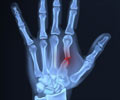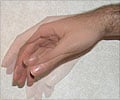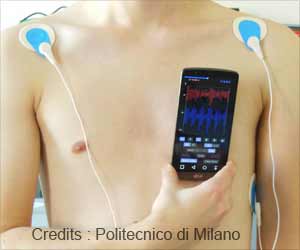The device appears as a macro-sieve and works to stimulate motor neurons in muscles that transmits signals to the sensory neurons.

The researchers will be testing the device on primates to see how well it transmits sensory data and will compare it to the commonly used cuff electrodes. The team has planned to conduct a study to identify the maximum number of concurrent channels that can be used to transmit signals, which will point to the maximum number of touch and temperature sensors that can be used with the new device.
“If this works to stimulate motor neurons in muscles, we can certainly stimulate sensory neurons, and that’s never been done in a behavioral model in non-human primates,” said Daniel Moran, PhD, professor of biomedical engineering at Washington University in St. Louis and lead researcher of this study.
“The more real estate the brain uses, the more processing power and the more important something is,” Moran says. “The hand area in the somatosensory cortex is a big piece of brain, so there should be a lot of bandwidth. We think we’ll be able to send a lot of information to it.”
Source-Medindia









